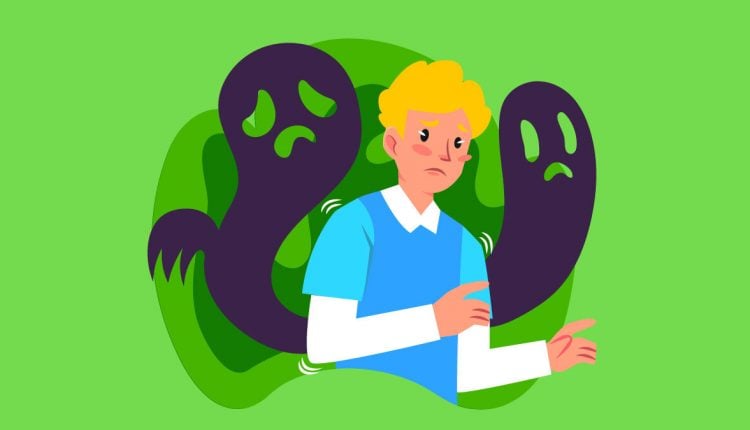While most of what the public hears about post-traumatic stress disorder involves soldiers who fought in Iraq and Afghanistan, any sort of trauma can cause serious and often disabling symptoms. Assaults, sexual abuse, natural disasters or something as “ordinary” as a car accident can leave people suffering for years.
Most of the symptoms are internalized; anxiety and depression, sudden bursts of anger or rage, and insomnia are often caused by PTSD. But external behaviors can be severely affected as well. For example, people traumatized by gun violence may refuse to leave their bedroom during a loud thunderstorm, and those whose trauma occurred in a parking lot may insist on parking in the street for the rest of their life.
PTSD – when it’s diagnosed – is usually treated by psychologists or psychiatrists with their normal toolbox of therapy and medications.
But there’s substantial evidence that the right types of marijuana can be as effective – or even more effective.
What are the right types? Let’s find out.
Can PTSD Be Cured or Treated Effectively?
Post-traumatic stress disorder is classified as a mental illness, and as with all mental illnesses, there are no known “cures.” Treatment to help patients manage their PTSD, however, can be extremely successful in many cases.
Psychotherapy or group therapy is the first-line treatment, just as it is with most other forms of mental illness. Many therapists use specific approaches like cognitive processing therapy, which helps patients “work through” the traumatic event step-by-step to help them get past the specific triggers they still experience.
Some patients, naturally, respond better than others. Success largely depends on the severity of the trauma and the patient’s ability to work with the therapist.
When those methods fail or are only partially successful, the usual anti-anxiety or anti-depression medications are prescribed. The goal is to alleviate the symptoms – not just depression and anxiety, but negative self-image, partial (dissociative) amnesia and insomnia. Those issues can prevent patients from fully functioning in the present, so the goal is to prevent them from regularly returning to the past whenever a triggering event occurs.
Alternative medicine approaches like acupuncture and yoga, and alternative drug therapies using ketamine or ecstasy, are sometimes used as well.
But more and more studies are showing that the best treatment of all may be cannabis.
PTSD and Pot
For quite a while, evidence was limited on whether marijuana could successfully treat the symptoms of post-traumatic stress disorder. That’s largely due to the fact that almost every study on weed’s effects is limited in scope; the murky legal status of cannabis has made it difficult to conduct large-scale research.
Small studies in Israel and New Mexico were encouraging. Major research conducted in Canada in late 2019, however, provides the first real data showing the ability of cannabis to help PTSD patients deal with their symptoms.
The medical information on more than 24,000 Canadians was compiled, and here’s the key finding: PTSD sufferers who didn’t use pot were seven times more likely to suffer severe depression, and were five times more likely to have thought about suicide.
Those are stark numbers, and the best evidence to date that cannabinoids and other substances in cannabis can definitely be an important tool to help those with post-traumatic stress disorder.
Let’s look at the best strains to consider.
Best Strains for PTSD and Anxiety
Blue Dream
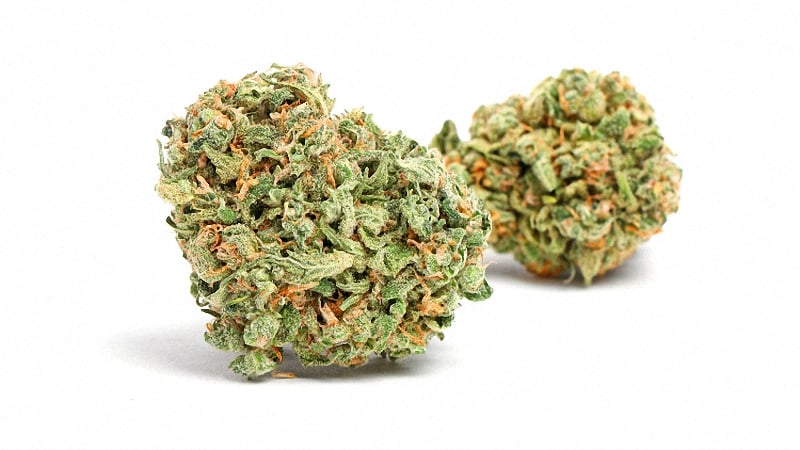
PTSD doesn’t just produce textbook depression symptoms in its sufferers. It often causes the inability to relax and a desire to avoid socializing as well. Blue Dream is just about the perfect strain for all of those issues.
It leans slightly Sativa, with moderately-high THC (usually not above 20%) and a relatively small amount of CBD. It produces a calm but invigorating head high, while its substantial indica content means warm, full-body (but not couch-locking) relaxation. The end result is that users are generally more social and energized, yet relaxed and able to go about their business without being held back by PTSD symptoms. Look for strains with lower THC levels if anxiety is a regular problem for you.
Pineapple Express
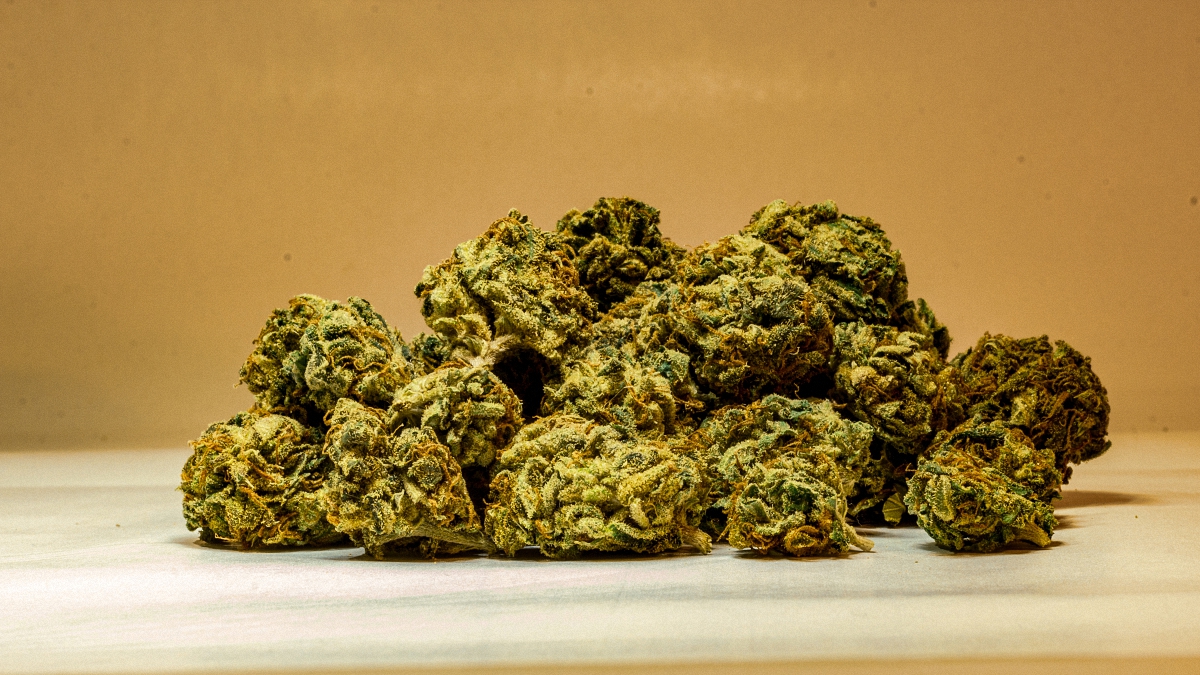
This isn’t the mind-blower you might expect if you’ve seen the movie with the same name (and who hasn’t?), but it is pretty potent. Pineapple Express is a 60/40 sativa, with THC content regularly topping out close to 25% – it’s great for most PTSD sufferers, but once again, the high level of THC can make anxiety worse. It’s better to look elsewhere if that’s a predominant symptom of your stress.
Expect a happy and creative high that won’t fog your brain but will elevate your mood, while the indica helps relax the body and calm the nerves. Pineapple Express can a bit of sedation, so it’s not the best option for those who have to spend the day at work. Once they’re home or ready to go out to enjoy the evening, however, it’s a great weapon against most of the issues that PTSD patients suffer.
OG Kush
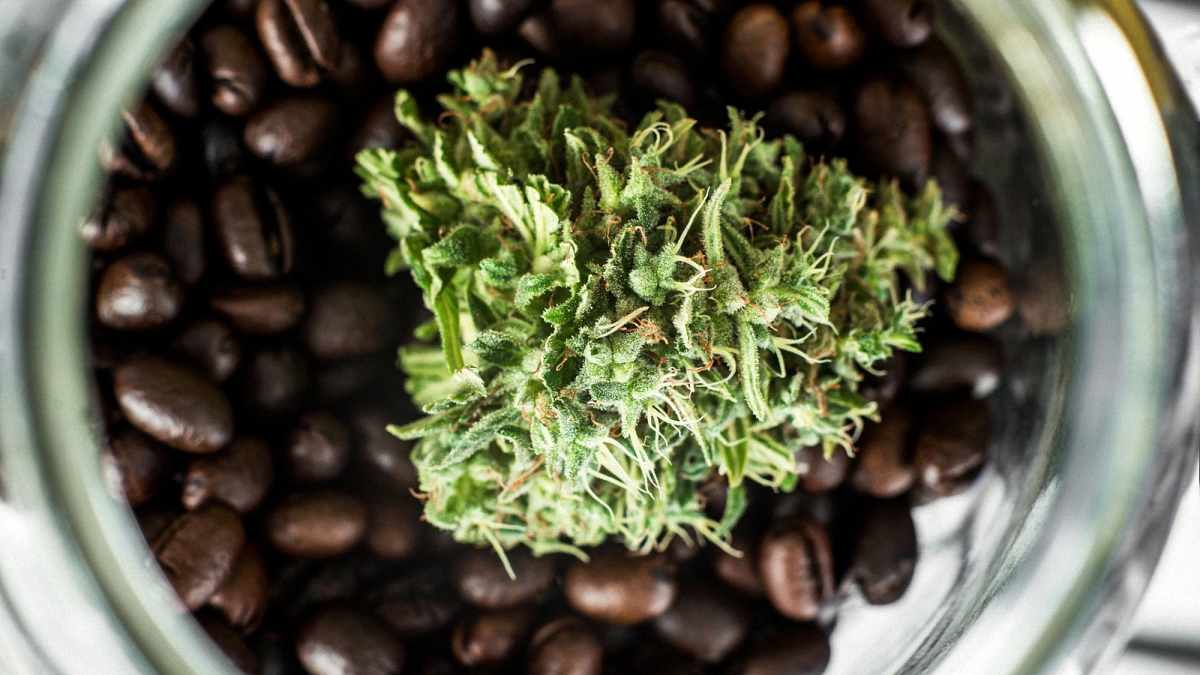
If “calm” is the #1 requirement to ease your PTSD symptoms, OG Kush is exactly what the pot doctor ordered. This legendary strain leans heavily indica, so the full-body relaxation is strong and potentially overwhelming for non-experienced users. (If you’re a regular smoker or have extreme insomnia issues, a step up to Master Kush may be in order.)
The head high is euphoric and fast-acting, thanks to THC content that’s normally well over 20%, but the effect is usually pleasant rather than the mind-racing variety. It allows users to focus on the present rather than dwelling on the past, a benefit for many PTSD sufferers. And since it’s long been a go-to choice for those who want to hang and chill with friends, it’s a great strain for those whose symptoms tend toward social anxiety.
Cannatonic
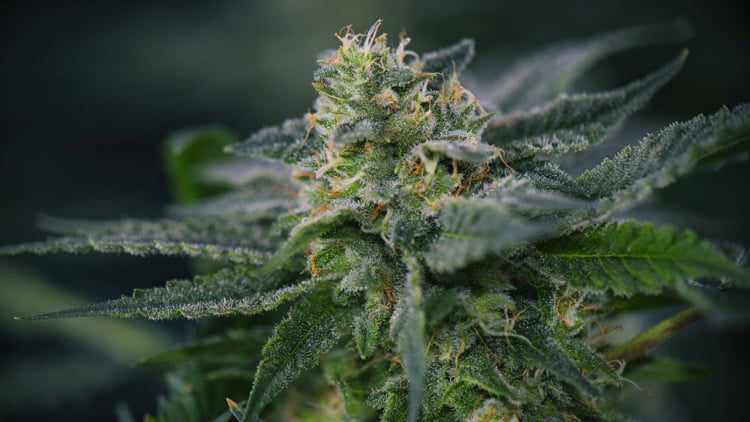
The options we’ve discussed so far all have high (or relatively-high) THC content. That means that many PTSD sufferers with severe anxiety issues would do well to stay clear of them because THC can make anxiety even worse. Cannatonic is right in their ballpark, though. It’s a 50/50 Sativa/Indica strain, but bred specifically for low THC and high CBD content; THC is almost always well below 10%, but CBD is often as high as 15%.
“Relaxing” would be an understatement when describing the effects of Cannatonic. It’s barely psychoactive, so its mental effect is best described as uplifting and mild. What it does do, though, is improve mood, ease depression and lower anxiety while providing strong relaxation. And its powerful secondary benefit, due to extremely high CBD content, is easing pain all over the body, from muscle aches to headaches.
ACDC
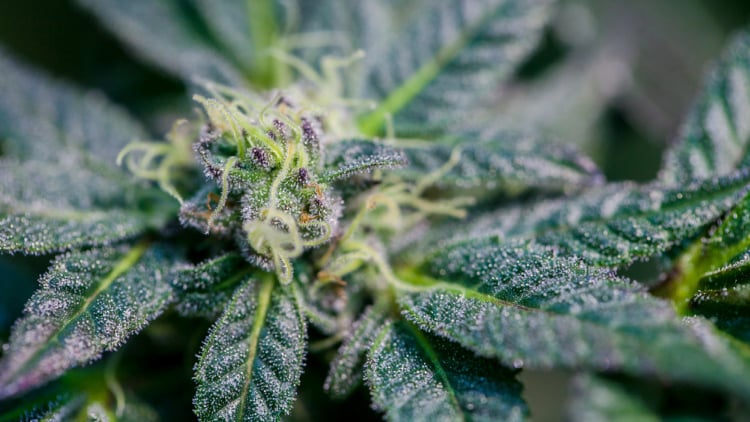
This is another high CBD, low THC strain; in fact, it’s even less psychoactive than Cannatonic. ACDC is a balanced Sativa/Indica, and while many patients favor it because it relieves pain without a noticeable head high, it’s also ideal for PTSD sufferers who want to ease the stress and anxiety they feel – without interfering with their daily work.
Another big plus is that ACDC allows users to focus, often a problem for those with post-traumatic stress who are distracted by sensory stimuli. Finally, this is an excellent choice for those who are inexperienced users, who have finally decided to stick their toe into the bong water because of their PTSD.
